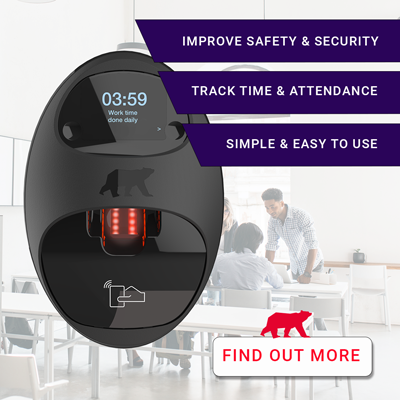

Blog
Why biometrics can prevent costly court cases
Almas Team

Delay and disruption are some of the most common causes of disputes on construction projects. Parties involved in a project might take legal action. Financial penalties are common when projects fail to meet the agreed ‘completion date’. Just one of these things can be enough to leave a construction business insolvent
A recent legal decision in a case within the construction sector in Australia has highlighted just how important time management is when running a construction site.
White Constructions, a developer, bought a legal action against sewer designer, IWS in connection with the development of a 100-lot site in the Illawarra region of New South Wales. The development included the design and installation of sewer infrastructure. A precondition for the registration of the subdivision was the issue by Sydney Water of a certificate (under the Sydney Water Act 1994). White Constructions alleged that:
- IWS proposed to Sydney Water an installation involving pumping stations rather than a gravity-based solution (as eventually approved by Sydney Water); and
- IWS’s failure to prepare a satisfactory sewer design within a reasonable time delayed the completion of the project by some eight months.
Delay Methodologies
Numerous forensic schedule analysis methods exist to quantify delays that occurred during a construction project. The most common delay analysis methods are:
- Impacted As-Planned
The impacted as-planned analysis involves the insertion of delay events into a baseline or as-planned schedule to determine the hypothetical impact of such events. - Collapsed As-Built
This method involves removing delay events from the as-built schedule to determine when the project should have completed ‘but for’ the delay events. - As-Planned vs. As-Built
This method compares planned start and finish dates with the actual start and finish dates of activities on the as-planned critical and near-critical paths. - Time Impact Analysis (TIA)
This methodology quantifies each delay based on the schedule immediately before and after the delay event took place. The difference between the project completion date before and after the event determines the extent of the delay. - Windows Analysis
The windows analysis is a retrospective technique that divides the total project duration into smaller periods and quantifies the as-built critical path delays for each of these periods.
Experts that disagree
In the case of White vs IWS, the experts appointed to investigate the delays disagreed on the analysis to be adopted. The expert appointed by IWS used a “collapsed as-built analysis”. The expert appointed by White used an “as-planned versus as-built windows analysis”.
What the Court said
The Court observed that the disagreement between the two expert programmers led ‘profoundly differing conclusions’. To assist the Court, the judge appointed a third expert who concluded that neither of the methods used by the parties’ experts was appropriate. The judge went on to apply the ‘common law common sense’ approach. In this case that meant that the delay analysis could only take place by ‘close consideration and examination of the actual evidence of what was happening on the ground’.
Affidavit material provided by White’s Site Foreman regarding delays and disruptions to site works was ‘couched in generalities’ and ‘incapable of founding any specific findings of delay’. The judge decided to use the site diary maintained by the construction contractor.
How biometrics can help
Delay and disruption are some of the most common causes of disputes on construction projects. Parties involved in a project might take legal action. Financial penalties are common when projects fail to meet the agreed ‘completion date’. Just one of these things can be enough to leave a construction business insolvent.
As the White case shows, it can be very hard to prove that any delay occurred if you are relying on a paper-based site diary. This type of record be easily falsified, abused or lost, and it may prove to be inadmissible as evidence in Court.
Biometric fingerprint recognition systems are the solution. They are ideal for construction sites because of the ways they reduce fraud, falsification and abuse. ‘Buddy punching’ – where one-person clocks in for another – can no longer happen, as only the person who is present can scan their fingerprint. Using biometrics means that you will always know who is on-site when they arrived, where they went (if you have multiple readers set up to control different areas) and when they left. The evidence provided by a biometric reader is irrefutable.
Almas Industries are market leaders, innovators, manufacturers and installers of CCTV systems, Biometric Access Control and Intruder alarms. We are SSAIB and PSA certified, which means that you can rest assured that our level of service is excellent. Our partnership with InnDex means we can offer a completely tailor-made digital on-boarding and biometric access control solution for your business. Contact the team at Almas Industries today to discuss biometric access control, biometric readers, or facial scanners for your business. You can arrange your free, no-obligation security survey by calling us on 0844 995 9454 (UK) or 01 68 333 68 (Ireland). If you prefer, you can always send a confidential email via [email protected].



